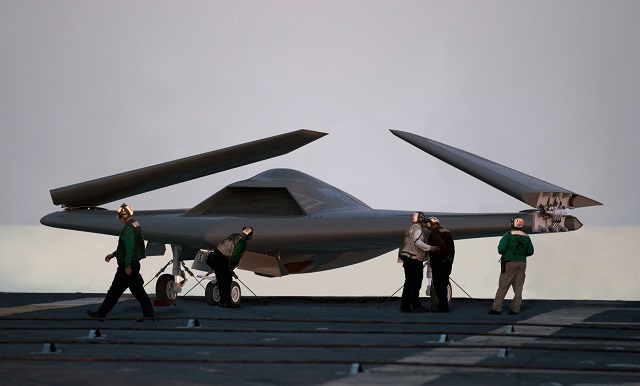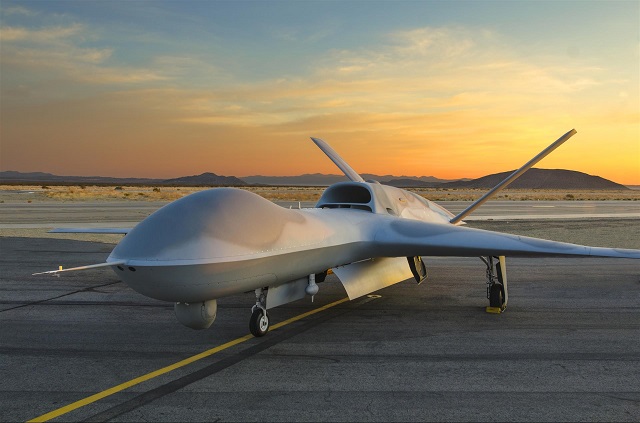The US Navy plans to “descope” the stealth requirement for its future carrier-based aerial refuelling unmanned air vehicle, which is now called the MQ-25 Stingray.
Formerly known as unmanned carrier-launched airborne surveillance and strike (UCLASS), the programme has been rejigged following “strategic portfolio review” by the Pentagon in 2015.
The changes shift emphasis from remotely controlled surveillance and strike missions to replacing overworked Boeing F/A-18 Super Hornets in the aerial tanking role. The Pentagon also imposed the designation RAQ-25 CBARS to reflect the unmanned aircraft's evolved mission, but the name is not popular among mariners.
Speaking at a defence programmes conference in Washington DC on 10 March, navy officials confirmed their “MQ-25 Stingray” will be less stealthy and more tanked-up than previously imagined and a request for proposals (RfP) for the air vehicle segment could emerge later this calendar year ahead of an evaluation and fly-off through 2017.
The newest plan, revealed in the navy’s fiscal year 2017 budget submission, would award an air vehicle contract to one prime contractor in the second quarter of 2018 for first delivery by 2021.
The navy has earmarked $2.16 billion for the MQ-25 effort through fiscal year 2021, as well as $350 million that has been gifted by Congress for continued air vehicle demonstrations in fiscal 2016.
“UCLASS is dead, but the money that was appropriated by Congress in the line is still usable,” says Vice Adm Joseph Mulloy, deputy chief of naval operations for integration of capabilities and resources. “We headed to Congress and talked to all the lawyers.”

Lockheed Martin
A multi-mission tanker is certainly not what Congress was expecting to come from the defence secretary’s top-level intelligence, surveillance and reconnaissance portfolio review, especially after successful ship-based demonstrations of the low-observable Northrop Grumman X-47B unmanned combat air vehicle.
US lawmakers have been pushing for a “penetrating, air-refuelable, unmanned carrier-launched aircraft capable of performing a broad range of missions in a non-permissive environment”, but Mulloy says congressional staffers, at least, are interested in Stingray.
He says by reducing the low-observable requirement, existing UCLASS competitors Northrop Grumman, Lockheed Martin, Boeing and General Atomics Aeronautical Systems “all have a better leg to stand on”. The competition is also open to new entrants, he says.
Mulloy confirms that the aircraft will also be capable of firing missiles and dropping bombs because the pylons on navy aircraft are engineered to carry both drop tanks and weapons, but spying and destroying targets will not be its main mission.

Northrop X-47B aboard the USS Harry Truman (CVN-75) in 2012
Northrop Grumman
The navy is still firming the final set of CBARS requirements with navy acquisition chief Sean Stackley ahead of an acquisition “gate review” in April. Those needs will then be validated by a multi-service joint capability review board ahead of an eventual RfP release.
“The four competitors we had for UCLASS are still viable,” says Mulloy. “The acquisition plan will probably be announced in the summer because we need to get through this review to no-kidding de-scope some of the stealth requirement.
“We want some of the other requirements in there, like we may expand the fuel requirement, but we know all four vendors have air-bodies that will meet those requirements.”
Northrop will probably base its offer on the X-47B demonstrator as Lockheed pushes its solution based on RQ-170 and F-35C technologies. Boeing also participated in the design phase for UCLASS. Finally, General Atomics will likely put forward its Predator C-based Sea Avenger.

General Atomics Aeronautical Systems
Source: FlightGlobal.com






















